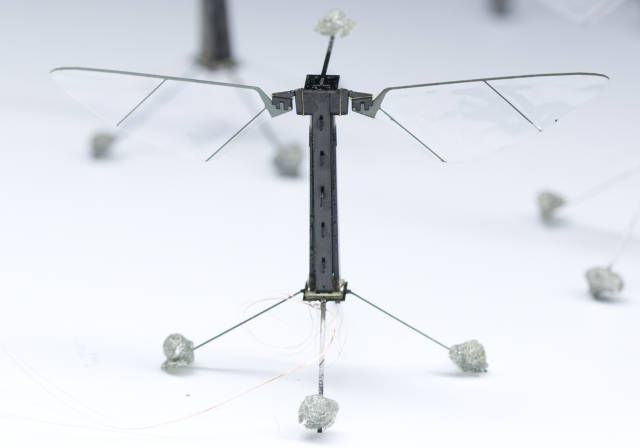
Lukas Wood
http://www.scientificamerican.com/article.cfm?id=this-robotic-bee-just-took-flight-t-2013-05
After 12 years of work, researchers at the Harvard School
of Engineering and Applied Sciences have succeeded in creating a fly-like robot. It is about the size of a quarter and weighs 80 milligrams. its wings are designed just like an insects. At the moment there isnt a small enough battery to support the robobee for more than 20 seconds. One of the first goals for the robobee was to be able to take of the responsibility of the dwindling population of honey bees in pollinating crops and flowers. another thought is that they could be used for spying.
Themes.
Science is collaborative.
Role of motivation and curiosity.
Robots have been a huge controversial topic lately. Many believe that robots are going to reduce the workforce needed (as discussed in the article linked below). I like that scientists are engineering something that isn't just helping humans.
ReplyDeletehttp://www.nbcnews.com/id/42183592/ns/business-careers/t/nine-jobs-humans-may-lose-robots/
Once the battery problem is solved the idea of using it as a spy drone is interesting. I would think that an object that small would be heavily effected by the wind, making it almost impossible to use outdoors. I have a small RC helicopter that cant fly if their is wind.
ReplyDeleteI found an article about military micro drones:
http://www.newscientist.com/article/mg21528745.000-microdrones-the-new-face-of-cuttingedge-warfare.html
The use of this new sort of technology to monitor the decreasing honey bee populations across America seems like a good idea. Whether its disease, environmental changes, or possibly even predation... hopefully this new little robot can get a longer battery and provide some sort of new insight into the issue. maybe then we can help our bees bounce back? But the seeming inability that this bot could have to fly outside seems pretty likely, as Michael stated. Hopefully this is able to go places.
ReplyDeletearticle on honey bee pop. decreasing:
http://www.globalresearch.ca/death-of-the-bees-genetically-modified-crops-and-the-decline-of-bee-colonies-in-north-america/25950
Robot animals are becoming fairly popular. Aside from being used to replace animals' roles, they are used to learn more about how animals solve problems and their genetic makeup.http://cosresearch.wordpress.com/2013/04/22/why-do-we-build-robot-animals/
ReplyDeleteIm not sure about the weight ratios. Something as small as 80 mg is going to get blown around a lot making it hard to do any flying and pollinating. As for the spy stuff that still looked big enough to be spotted in close quarters situations. If you want to spy on someone you should definitely not be noticed. Also making it and programing it to do those things will be difficult. Our high school robot is capable of shooting frizbees and driving. More complex stuff is a lot harder.
ReplyDeletehere is a site that has the same robots as your picture. Judging by the picture these could easily tip over.
http://micro.seas.harvard.edu/